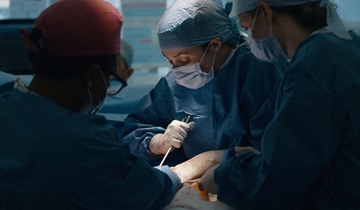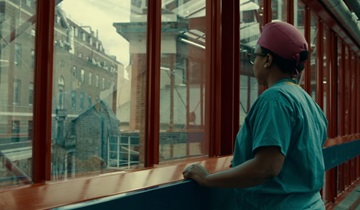Meet the trauma surgeon who features in Netflix's latest series
To celebrate the launch of Netflix's new documentary series Critical: Between Life and Death, which features staff from our major trauma team at St Mary's Hospital, we sat down with trauma surgeon Maryam Alfa-Wali. Maryam reflects on the personal loss that led her to trauma surgery, the life-saving impact of the major trauma network, and what she hopes viewers will take away from the series.
What inspired you to work in this field?
I sadly lost a close friend in a road traffic accident when I was in my early twenties. She had always supported me, especially during medical school, and truly believed I was going to become a doctor. I think it was both in her honour and memory that I took the path to being a trauma surgeon and looking after severely injured individuals.

What impact has the major trauma network had for trauma patients?
It has had an enormous impact. Now, critically injured patients in the UK are able to have focused trauma care with a dedicated team from pre-hospital to discharge. The network brings together experts from multiple fields from emergency medicine, nursing, radiology, physiotherapy, and psychology — to mention just a few!
What was it like being part of the documentary?
I’ll be honest, it was a little bit nerve-wracking to be “on camera”, but then once I was “in the zone” of working, the cameras seemed to disappear, and I didn’t think about them.
What's the key thing you'd like the audience to take from Critical?
I’d love for the public to watch the show and really get a feel for how people with serious injuries are cared for — not just by one person, but by an entire team working together. I also hope it sparks interest in healthcare careers among young people, showing them the many different roles involved.
And just as importantly, I want it to highlight how small choices — like wearing a seatbelt or a helmet when cycling or using an e-scooter — can make a huge difference. These simple actions can help prevent injuries that can have a physical, psychological and economic impact on an individual and those closest to them.
Maryam"I’d love for the public to watch the show and really get a feel for how people with serious injuries are cared for — not just by one person, but by an entire team working together."
How do you see trauma care evolving in the future, both at the Trust and in London?
At both the Trust and London-wide levels, there’s growing potential for more health education initiatives, such as teaching practical skills like how to stop bleeding, and placing greater emphasis on preventative health strategies. One way in which we can achieve this is through stronger collaboration across the community — including schools, local councils, and GPs.
What are you most proud of from your time at the Trust?
The collaboration and teamwork I have with my colleagues who care for trauma patients. Yes, we do sometimes have tough moments but as I walk around the hospital, it's nice to smile and have a chat with different people and teams who play their part in caring for our patients. From the porter helping take patients from resus to their scans, to the interventional radiology team, and the nurses and operating department practitioners (ODPs) in theatre, as well as the therapists supporting patient recovery — it’s a true team effort. I just love my job as a trauma surgeon!

Major trauma in London
The major trauma centre at St Mary’s Hospital, run by Imperial College Healthcare NHS Trust, is part of a unique network of hospitals, air ambulances and paramedics that provides a safety net for 10 million people in London. It’s known as London's major trauma system and treats over 12,000 people with the most serious injuries each year. Over the last five years, the system has improved survival rates for major trauma patients by 50 per cent, saving an estimated 610 lives.
